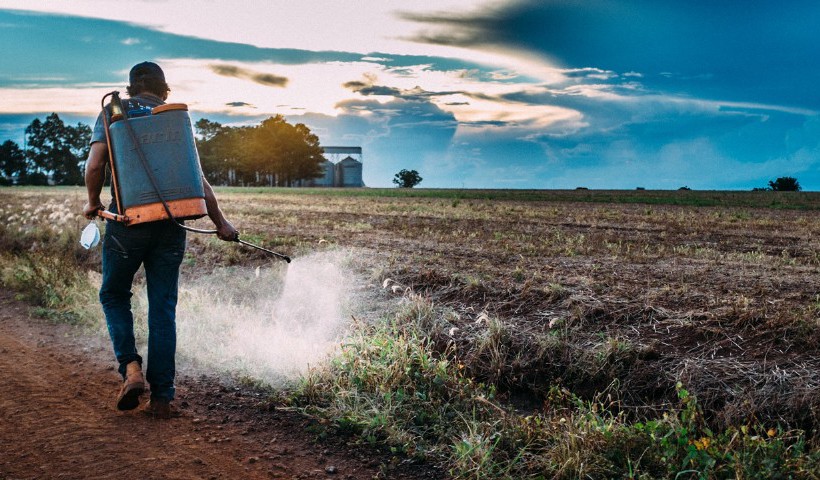Want to ruin a pleasant holiday dinner? Bring up GMOs. They’re right up there with politics and religion on the list of Thanksgiving conversation destroyers.
On one side you’ve got the no-way, no-how, keep-that-poison-out-my-body crowd, convinced that eating GM food is like a dip in the Erie Canal. The other side is often research-driven, touting the fact that no studies have definitively proven GMO-related health issues. And somewhere in the middle is the cautious observer, (à la Europe) who says that even if GM foods seem cool now, we’ll need years to assess their long-term impacts.
Whatever side you’re on, tonight’s episode of VICE on HBO (airing at 11 PM EST) should be an eye-opener. The first half of the show is dedicated to a close look at GM crops, taking the viewer on a global tour. Along the way, you’ll visit the world’s largest seed repository in Svalbard, Norway, meet struggling GM soy farmers in Paraguay, and even go behind-the-scenes in the belly of the beast: Monsanto HQ in St. Louis.
Along with a crack team of producers, researchers and shooters, VICE editor Joe Langford worked on this segment (among other projects) for nearly a year. As the grandson of Midwestern farmers and a sustainable farming enthusiast (spoiler: he keeps bees), Langford felt very close to the material. On the eve of the episode’s debut, we sat him down to learn more about how it all came together.
MUNCHIES: Hey, Joe. So when you first started working on the piece, what were your thoughts on GMOs?
Joe Langford: Have you read the Vandana Shiva piece in the New Yorker? I know her views can be over the top, but she’s worth listening to.
Yes, there was that story, then her angry response to it, then the New Yorker’s angry response to her response. It was kind of a mess.
That’s the thing with GMOs. People get real heated, real fast. Everyone’s got opinions.
There’s a lot of territory to cover with this topic. Was it tricky deciding what to keep?
God, yes. I’m the guy who was in the editing room at 2 AM having a hard time figuring out which footage we’d have to get rid of. It was a very emotional process at times. I got quite attached.
It’s impressive that you got Monsanto to cooperate. How’d you manage that?
Yes, that was quite a “get.” Our executive producer BJ Levin and supervising development producer Mark Allen were instrumental in securing that access. I’m not sure how hard it was to convince them to do it, but the process seemed to take quite awhile.
Check out an exclusive clip from “Savior Seeds” below:
In the past they’ve been kind of notorious for denying journalist access. Any idea why they might have opened the door this time?
Monsanto has gotten a lot of bad press for a long time; it seems like they are trying to change the narrative a bit. And doing a VICE segment means that they’ll be connecting with a younger audience.
It doesn’t exactly make them look great, though. There’s a lot of damaging stuff on how Monsanto has created a dangerous dependence on their GM seeds and pesticides. And the reporter (Isobel Yeung) sure made that Monsanto scientist squirm.
[Laughs] Yeah, that part was great. I mean, Monsanto definitely wanted to shift our focus onto their friendlier, non-GMO seed breeding programs. The guy who gave us a tour of their facilities was the most folksy character ever. At one point he looked at the camera and said, “This is the CSI of Monsanto!” It was so hilarious. Wish we could have kept that in.
Fifteen minutes seems like a short time to tell such a complicated story. Do you wish you had more time?
Yes, definitely. The beauty is that we’ll be able to expand it out when we run it on VICE.com. There’s this one great scene when a Monsanto employee is talking about how safe glyphosate [a key ingredient in Monsanto’s signature pesticide, Roundup] is. Isobel asks if she’d be willing to take a bath in it. The lady says yes, without hesitation. It’s crazy!
You did include a part about new World Health Organization study on how glyphosate is strongly linked to cancer.
That study came out when we were late in production on this, but we knew we had to include it. It was too relevant to this piece. We sure had to hustle though, lining up a last-minute interview with that WHO scientist.
Overall, do you think this segment will be surprising to viewers?
I’m not sure. I mean, food people who are really into this stuff and read Michael Pollan and Mark Bittman will probably know the basics. What do you think?
There’s definitely info that was new to me, especially about soy farming in Paraguay. Also it helps to have a visual angle on these things. I had heard about Roundup-resistant “superweeds” before, but it was wild to see how huge they are.
Yes, definitely. When we first pitched this, some people weren’t sure if there was a strong enough visual angle to GMOs. I think we proved that there is.
Do you think you’ll cover other aspects of GMO foods in the future?
I would love to, honestly. There’s all the non-Monsanto aspects, about scientists trying to make genetically modified fruits and vegetables with real benefits for consumers. Our show just got renewed for three more seasons—maybe we’ll end up doing more GMO stories!
Thanks for speaking with me, Joe.

